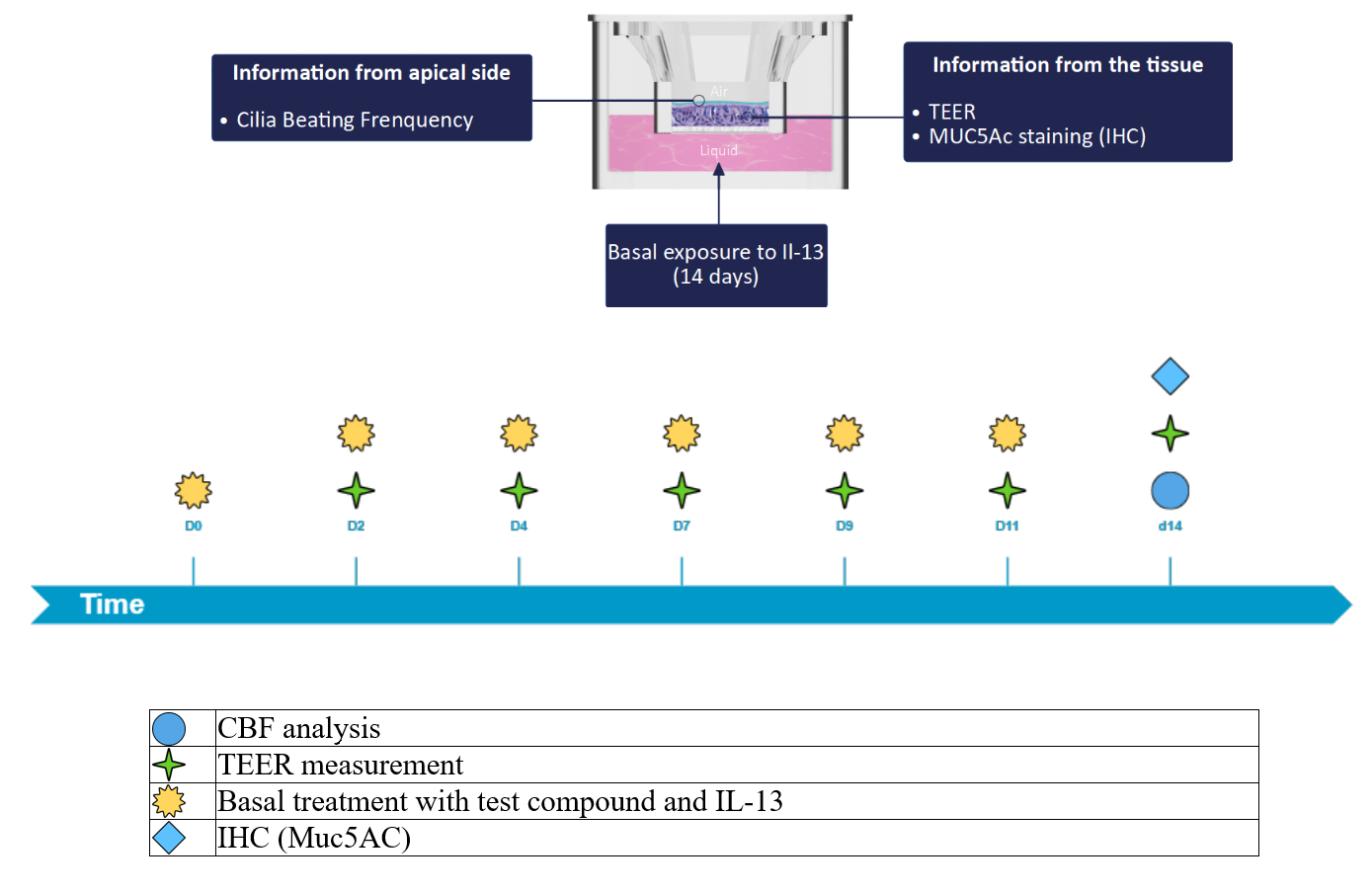Goblet cell metaplasia can be induced by environmental pollutants such as cigarette smoke.
The aim of this assay is to evaluate compound efficacy to block or to reverse goblet cell metaplasia.
Respiratory allergy as well as asthma is characterized by TH-2 cytokine-mediated immune response in which IL-2, 3, 5, and 13 play an important role. Treated with neutralizing anti-IL-13 monoclonal antibody, the health condition of several asthmatic patients was significantly improved, suggesting that targeting the TH-2 cytokines is a promising therapeutic option. This assay allows evaluating and ranking the efficacy of drugs blocking the IL-13 signaling pathway.




